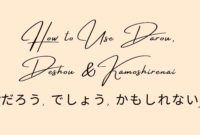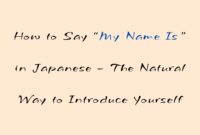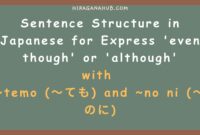The Particle “no” to Indicate Possession (これ/それ/あれ + は + Subject の です)

Japanese sentences with the particle “no”. Let’s continue learning about the particle “の” (No), but this time we’ll explore a more concise way to express possession. In this lesson, we’ll use the pattern これ/それ/あれ + は + Subject の です (kore/sore/are wa subjek no desu) to indicate ownership without mentioning the object.
What’s the Difference?
Unlike the previous article where both the owner and the object are mentioned, this structure omits the second noun (Noun2). This makes your sentences simpler and more conversational.
Sentence Pattern
これ/それ/あれ + は + Subject の です (kore/sore/are wa subjek no desu)
Here:
- kore/sore/are: Demonstratives meaning “this,” “that near you,” and “that over there.”
- subjek: Refers to the owner of the item.
- no desu: Indicates possession.
It translates to: “This/that is [subject]’s.”
Example Sentences
Kanji: これは私のです。
Romaji: Kore wa watashi no desu.
Meaning: This is mine.
Hiragana: これは わたし の です。
Kanji: それは山田さんのです。
Hiragana: それは やまださん の です。
Romaji: Sore wa Yamada-san no desu.
Meaning: That is Yamada’s.
Kanji: あれは彼のです。
Hiragana: あれは かれ の です。
Romaji: Are wa kare no desu.
Meaning: That is his.
Study Tips
- Practice using this pattern in your daily conversations.
- Apply it to describe items you or others own.
- Focus on pronunciation and intonation to sound more natural.
With this short and practical pattern, you can easily express ownership in Japanese. Keep practicing, and you’ll sound like a native in no time!


